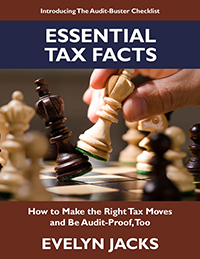Last updated: January 23 2018
Tax Tip: Infirm or Disabled: What’s the Difference for Tax Purposes?

Caring for a loved one with a disability? CRA may contact you to verify your claim for the new Canada Caregiver Amount or the Disability Amount. For these reasons, it’s important to draw the distinction between “infirm” and “disabled,” for different provisions on the tax return.
An infirm dependant is one who has “an impairment of physical or mental functions.” A child under 18 will be considered to be “infirm” only if he or she is likely to be, for an indefinite duration, dependant on others for significantly more assistance in attending to personal needs, compared to children of the same age. This person can be claimed for the Canada Caregiver Credit.
It is interesting to note that with the new Canada Caregiver Credit there is no longer a requirement that the dependant reside with the taxpayer. Nor does the CRA have any specific documentation requirements. However, CRA may ask for a signed statement from a medical practitioner verifying when the impairment started and how long it is expected to continue. In the case of children under 18, CRA will want to know whether the child will be dependent on other adults for a specific or an indefinite period of time. Remember also, there are some options for claiming the credit in the year of separation, divorce or co-habitation, so be sure you know these new Essential Tax Facts.
A disabled dependant is one who has a “severe and prolonged impairment in mental or physical functions.” To qualify as disabled, a Disability Tax Credit Certificate (T2201) must be completed and signed by a medical practitioner to certify that the individual is disabled. In addition, CRA must accept the certificate.
 |
Other credits for infirm and disabled taxpayers include:
- Child Care Deduction—An enhanced child care deduction of up to $11,000 can be claimed for disabled dependants, but only if they qualify for the Disability Amount and have a Disability Tax Credit certificate, signed by a medical practitioner and accepted by CRA.
- Disability Supports Deduction—A medical doctor must certify that the supports, including attendant care are required; a Disability Tax Credit certificate is not required.
- Disability Amount—claimed for severe and prolonged disabilities expected to last more than 12 months. A Disability Tax Credit certificate signed by a medical practitioner is required to make this claim.
- Medical Expenses—The amounts claimable here fall into two categories: (a) expenses for your own nuclear family—yourself, your spouse (including common-law) and minor children, and (b) a claim for the infirm adults you may be supporting: adult children, parents, grandchildren, siblings, uncles, aunts, nephews, nieces, (including in-laws).
All the various credits providing tax relief for families who are dealing with the costs of supporting the sick or disabled are often inter-connected, and often audited. Check out the Audit-Buster Checklist for Medical Costs.
Excerpted from NEW ESSENTIAL TAX FACTS: How to Make the Right Tax Moves and Be Audit-Proof, Too. Pre-orders accepted now for this new book by best-selling author Evelyn Jacks, President of Knowledge Bureau. It will be available in February 2018.
©2018 Knowledge Bureau Inc. All Rights Reserved.





